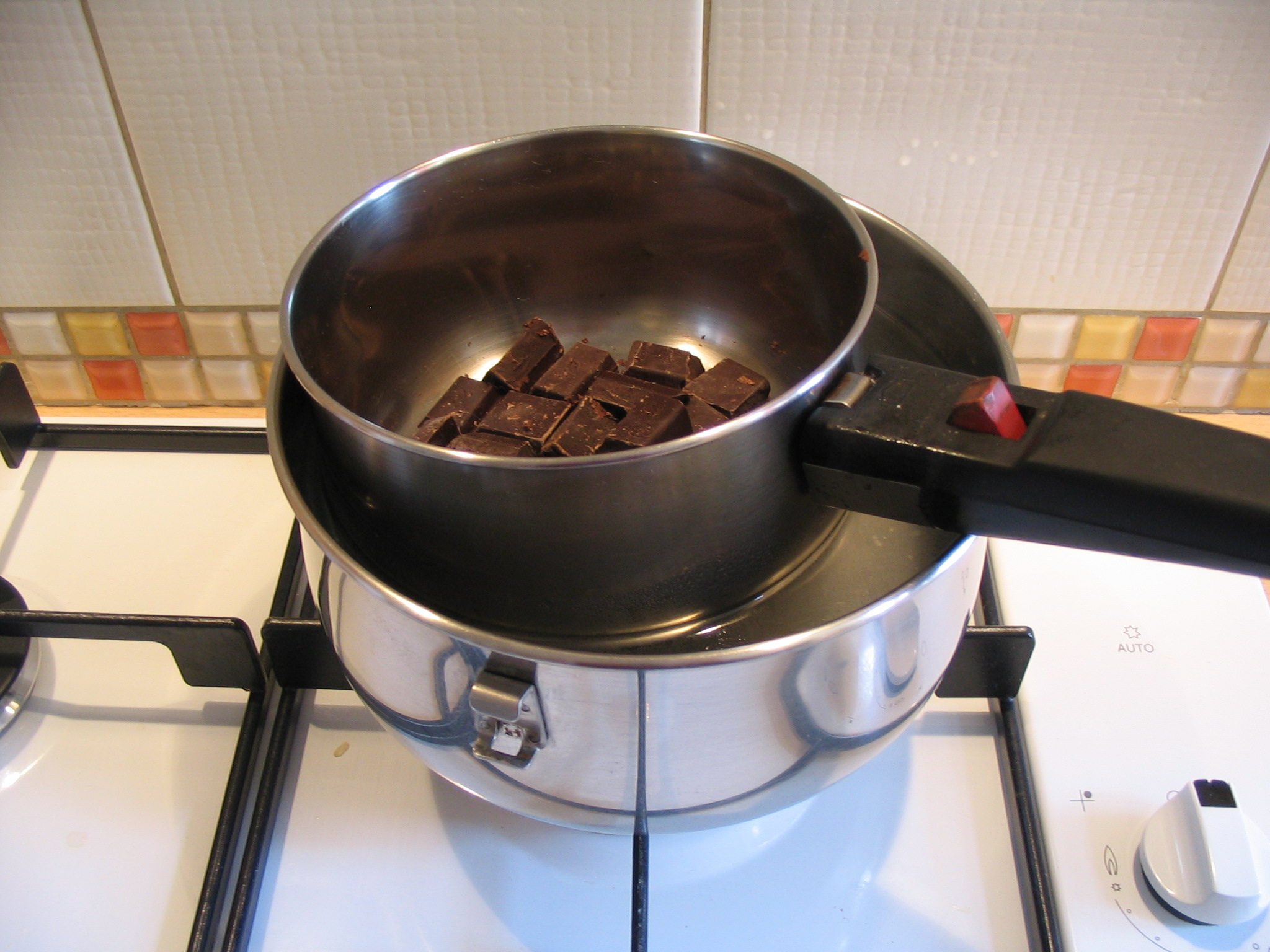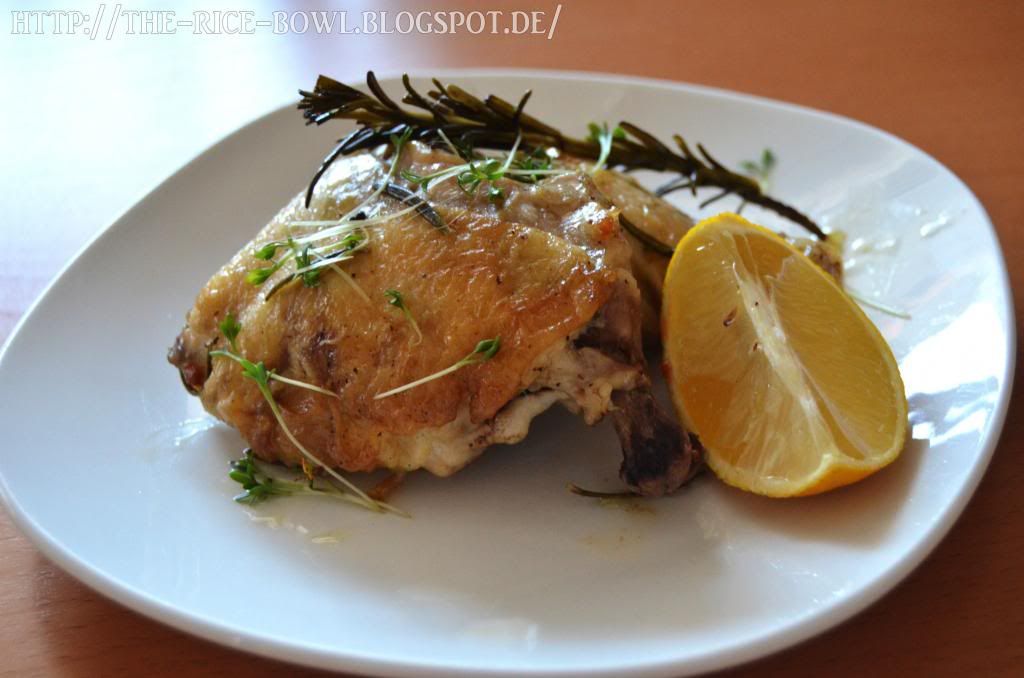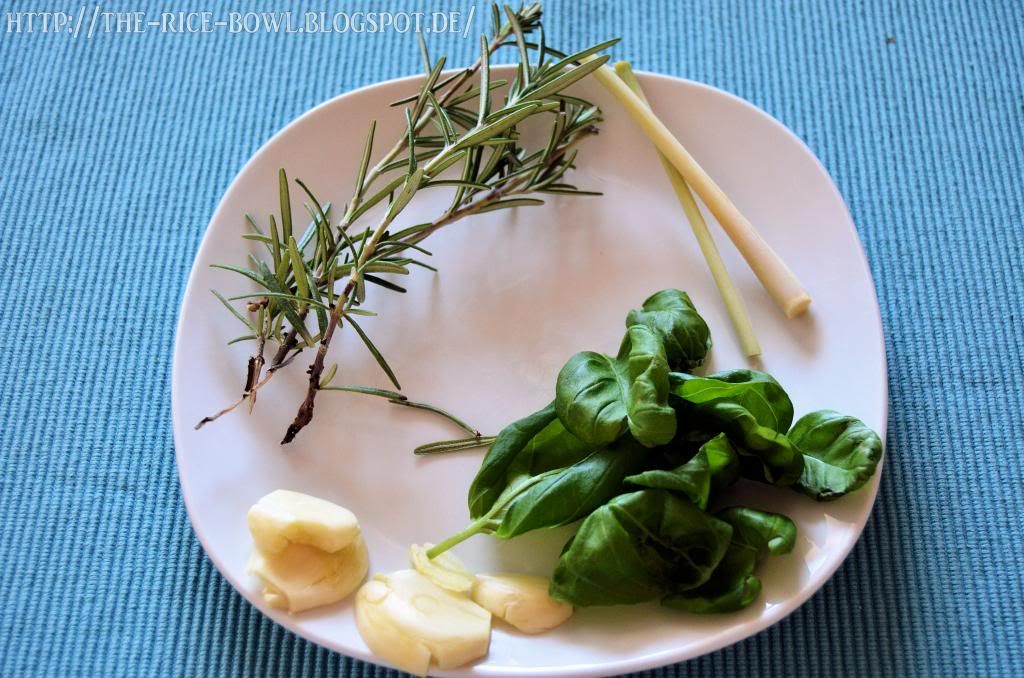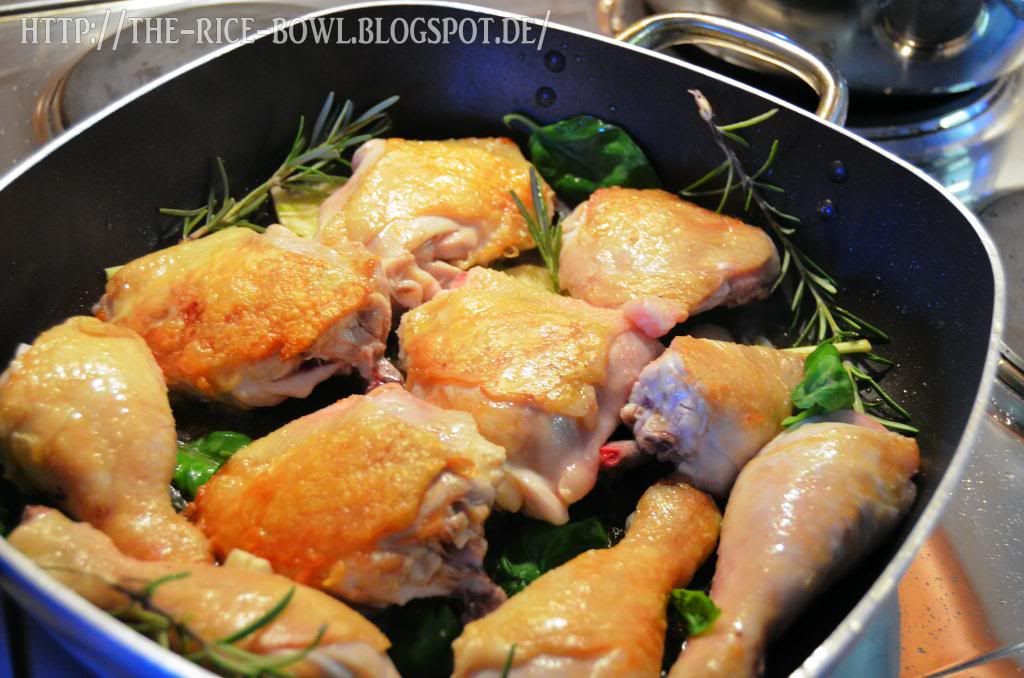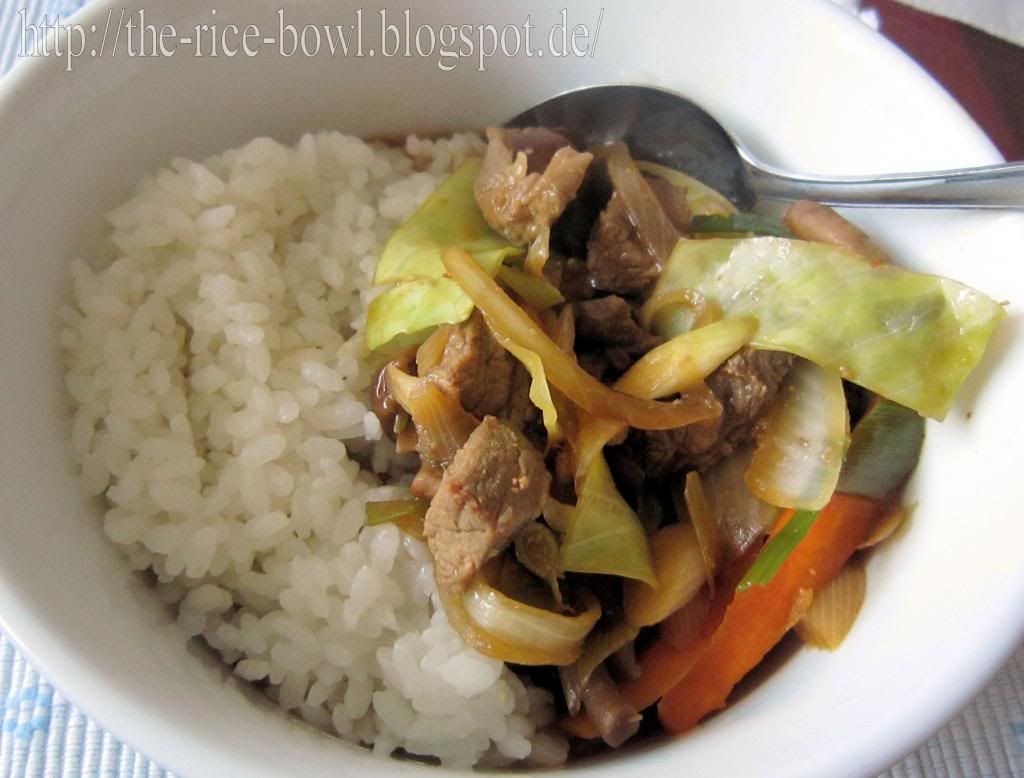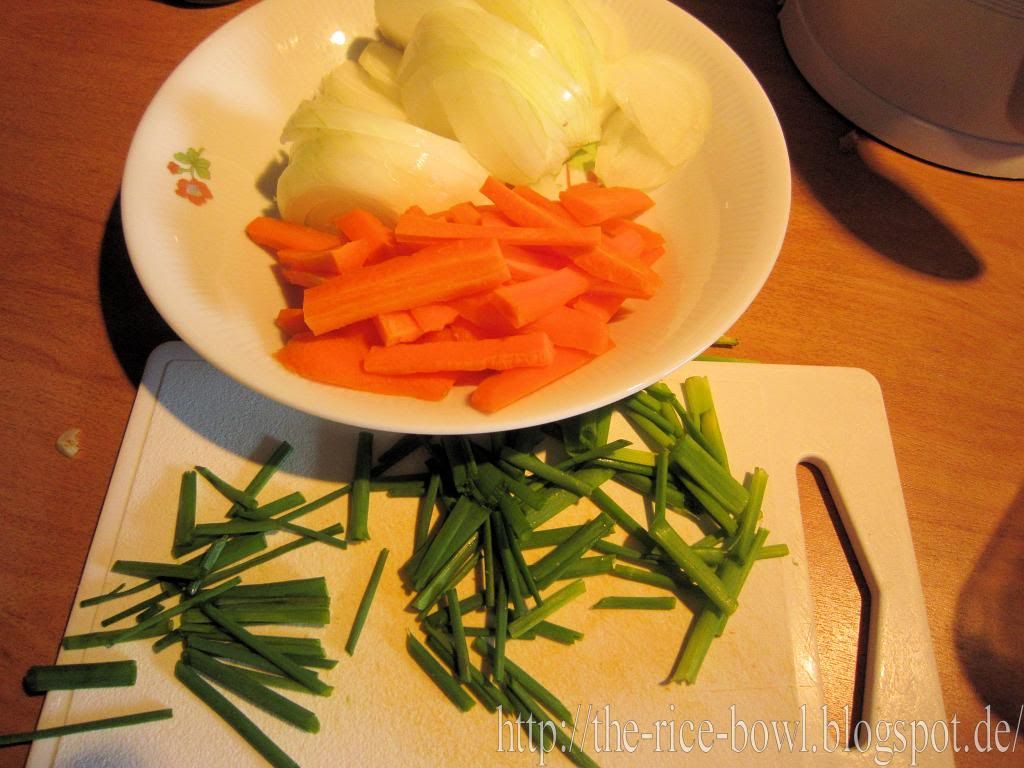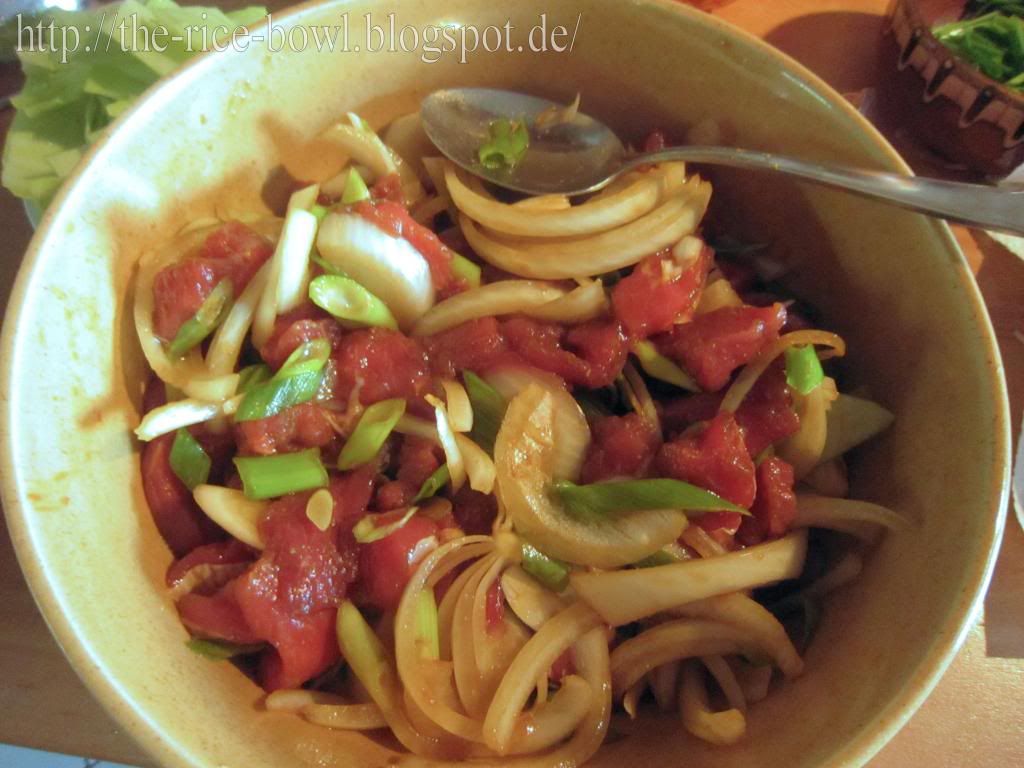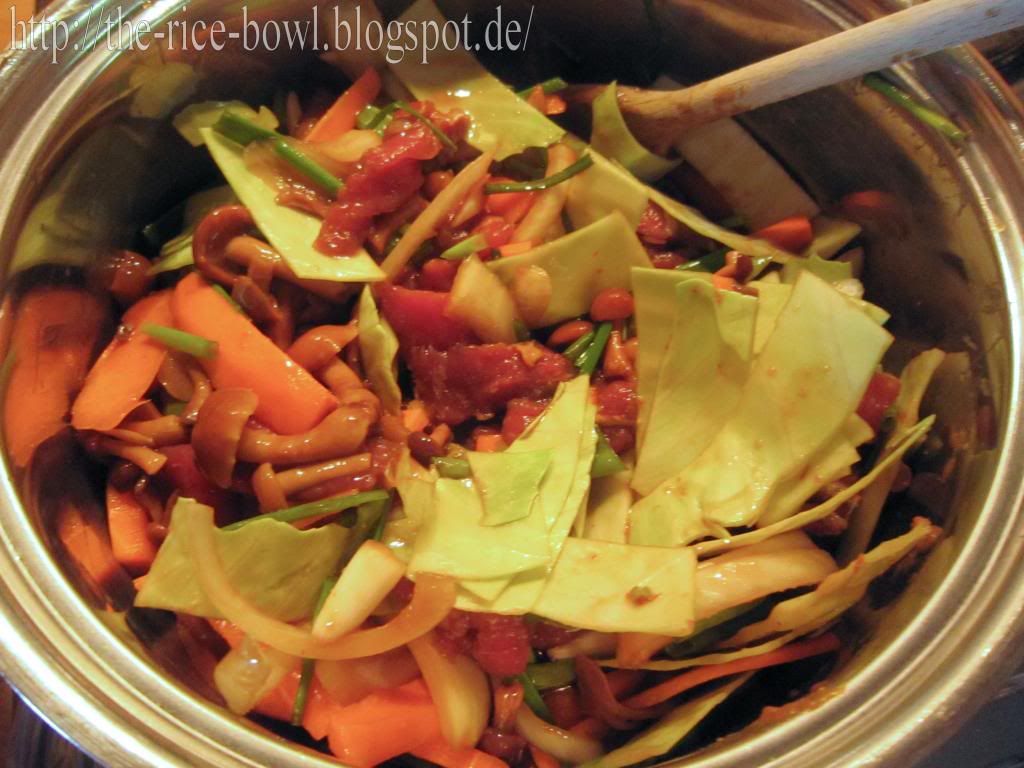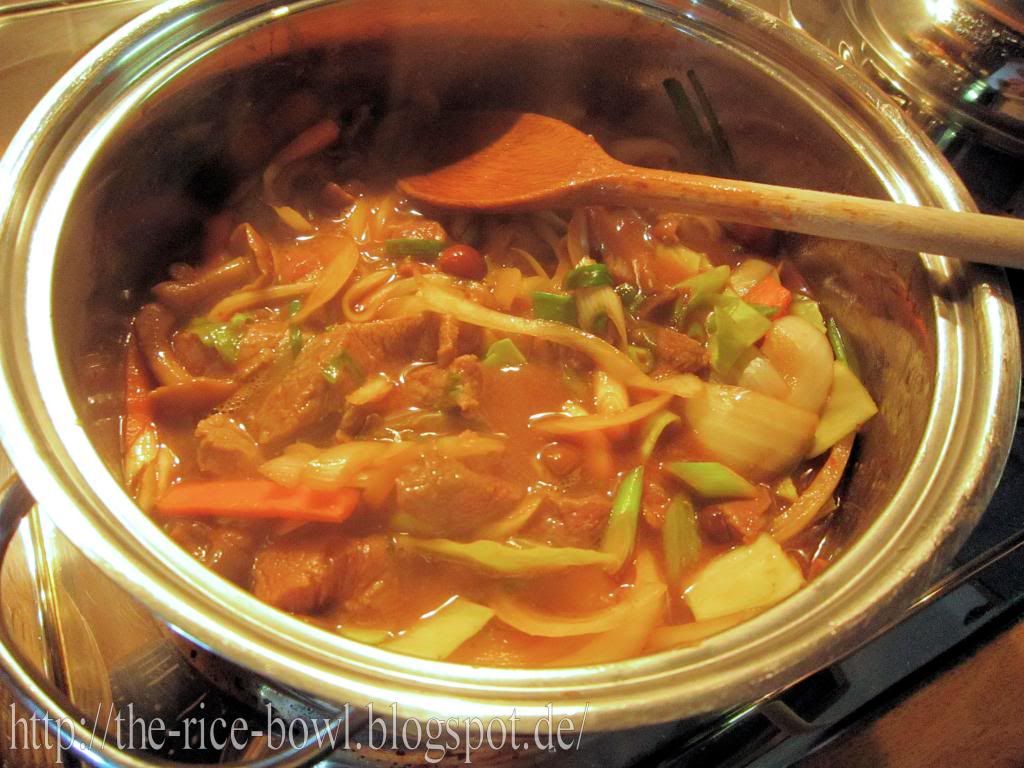Kroketten wurden erstmals im 19. Jahrhundert in Japan eingeführt. Korokke ist die Abwandlung dieses Gerichts, um es an den japanischen Geschmack anzupassen. Ich kann eine Freundin zitieren, die dieses Gericht nutzte, um ihren Eltern mal ein...e anderer Seite des asiatischen Küche zu zeigen - mit Erfolg.
Korokke bieten sich auch als Bentofüllung an, weil man sie gut vorbereiten und schnell beenden kann.
Korokke für 4 Personen
Korokke bieten sich auch als Bentofüllung an, weil man sie gut vorbereiten und schnell beenden kann.
Korokke für 4 Personen
750g Kartoffeln
200g Zwiebeln
300g Rinderhack
ein wenig Butter zum Anbraten
Salz und Pfeffer nach Geschmack
Für die Panade
Mehl
1 verquirltes Ei
Semmelbrösel (am besten Panko)
Öl zum Frittieren
1. Die Kartoffeln schälen und weich kochen. Es gibt eine 'Fix-Variante', um Kartoffeln zu kochen. Dazu schält man sie, halbiert sie, wickelt jede Hälfte in Frischhaltefolie und stellt das Ganze dann bei 600Watt für 5 Minuten in die Mikrowelle. Danach sind die Kartoffeln gekocht, wenn man die Mikrowelle nutzen möchte.
2. Die gekochten Kartoffeln in einer Schüssel zu Püree zerdrücken.
3. In einer Pfanne die Butter zerlassen. Die Zwiebeln glasig braten und dann das Rinderhack dazu geben. Krümelig braten.
4. Die Fleisch-Zwiebel Mischung zum Kartoffelpüree geben und gut vermischen. Mit Salz und Pfeffer abschmecken. Danach ein wenig zur Seite stellen und auf lauwarm abkühlen lassen, denn ihr müsst es anfassen können.
5. Für die Panade Mehl, verquirltes Ei und Semmelbrösel auf je einem Teller ausbreiten. Mit den Händen, die Kartoffel-Fleisch Mischung zu ca. handtellergroßen, flachen Kroketten formen (siehe Bild). Zuerst im Mehl wenden, dann im Ei und schließlich in den Semmelbröseln.
6. In einem Topf das Frittieröl auf 180°C erhitzen. Um zu überprüfen, ob es heiß genug ist, kann man ein Stück Semmelbrösel in das Öl fallen lassen - wenn es sofort brutzelnd an die Oberfläche steigt, ist es heiß genug.
7. Die Korokke nach und nach in das Öl geben und goldbraun frittieren. Nicht alle auf einmal reingeben, denn mit jedem Stück sinkt die Temperatur des Öls ein bisschen.
8. Wenn sie goldbraun sind, die Korokke aus dem Öl nehmen und auf Küchenpapier abtropfen lassen. Damit sind sie im Prinzip fertig. Ihr könnt sie mit in Streifen geschnittenem Chinakohl und japanischer Sauce servieren. Oder aber mit Curry oder auf einem Hot-Dog Brötchen als Korokke-Pan oder eben als Bentozutat.
200g Zwiebeln
300g Rinderhack
ein wenig Butter zum Anbraten
Salz und Pfeffer nach Geschmack
Für die Panade
Mehl
1 verquirltes Ei
Semmelbrösel (am besten Panko)
Öl zum Frittieren
1. Die Kartoffeln schälen und weich kochen. Es gibt eine 'Fix-Variante', um Kartoffeln zu kochen. Dazu schält man sie, halbiert sie, wickelt jede Hälfte in Frischhaltefolie und stellt das Ganze dann bei 600Watt für 5 Minuten in die Mikrowelle. Danach sind die Kartoffeln gekocht, wenn man die Mikrowelle nutzen möchte.
2. Die gekochten Kartoffeln in einer Schüssel zu Püree zerdrücken.
3. In einer Pfanne die Butter zerlassen. Die Zwiebeln glasig braten und dann das Rinderhack dazu geben. Krümelig braten.
4. Die Fleisch-Zwiebel Mischung zum Kartoffelpüree geben und gut vermischen. Mit Salz und Pfeffer abschmecken. Danach ein wenig zur Seite stellen und auf lauwarm abkühlen lassen, denn ihr müsst es anfassen können.
5. Für die Panade Mehl, verquirltes Ei und Semmelbrösel auf je einem Teller ausbreiten. Mit den Händen, die Kartoffel-Fleisch Mischung zu ca. handtellergroßen, flachen Kroketten formen (siehe Bild). Zuerst im Mehl wenden, dann im Ei und schließlich in den Semmelbröseln.
6. In einem Topf das Frittieröl auf 180°C erhitzen. Um zu überprüfen, ob es heiß genug ist, kann man ein Stück Semmelbrösel in das Öl fallen lassen - wenn es sofort brutzelnd an die Oberfläche steigt, ist es heiß genug.
7. Die Korokke nach und nach in das Öl geben und goldbraun frittieren. Nicht alle auf einmal reingeben, denn mit jedem Stück sinkt die Temperatur des Öls ein bisschen.
8. Wenn sie goldbraun sind, die Korokke aus dem Öl nehmen und auf Küchenpapier abtropfen lassen. Damit sind sie im Prinzip fertig. Ihr könnt sie mit in Streifen geschnittenem Chinakohl und japanischer Sauce servieren. Oder aber mit Curry oder auf einem Hot-Dog Brötchen als Korokke-Pan oder eben als Bentozutat.


